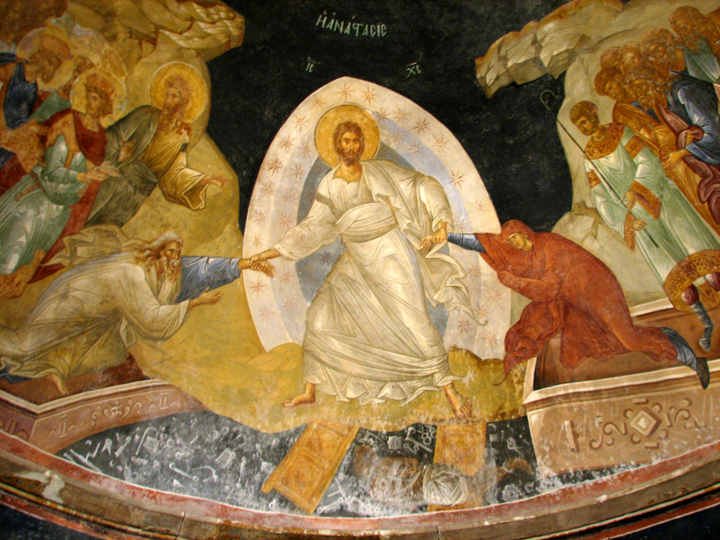How are the Dead Raised?
 |
| The resurrection of Adam and Eve |
One of
the big questions Christians face concerns the resurrection. We’re still in
Eastertide, so the question is a live one. The hymns of the season boldly
proclaim Christ to be alive. Death cannot hold him. Therefore, death has lost
its sting. This is good news, is it not?
Then
comes the question of how this all happens. Science seems to represent a
significant hurdle. Though there are numbers of reports of near-death
experiences, they remain controversial and problematic. I won’t argue for or
against them, but I confess to being skeptical about the reports. But, for some
these reports have proven helpful, and so I’ll leave them there.
The
reason I ask the question is that my Wednesday Bible Study has reached part two
of 1 Corinthians 15, where Paul responds to the question of how the dead are
raised. People apparently asked then, as they do now: “With what kind of body
do they come? (1 Cor. 15:35). It’s a good question, though Paul’s response
suggests that he found it without merit (or rather the sentiment behind it that
rejected the resurrection). Consider his use of the word “fool” as the opening
of the response in verse 36.
Though I affirm the bodily resurrection, I do
not understand the resurrection to be a simple resuscitation of the physical
body so that it can go on as before. In John 11, Jesus raises Lazarus from the
dead. It is clear, however, that Lazarus has simply resumed normal human life.
Thus, at some point, he will die. This is not what Paul means by resurrection,
nor does John for that matter. What Paul has in mind is a transformed body.
When we
read Paul, we need to take into account that he is rarely clear in his
pronouncements. That being said, he makes a strong distinction between what is
perishable and what is imperishable. There is a mortal/physical body and an
immortal/spiritual body.
42 So it is with the resurrection of the dead. What is sown is perishable, what is raised is imperishable. 43 It is sown in dishonor, it is raised in glory. It is sown in weakness, it is raised in power. 44 It is sown a physical body, it is raised a spiritual body. If there is a physical body, there is also a spiritual body. [1 Cor. 15:42-44 NRSV).
Whatever is the
nature of this resurrection body, Paul understands it to be different from the
physical body, which is sown in weakness but raised in power. That is, it is
“sown a physical body, it is raised a spiritual body.” This doesn’t give us
much to go on, but it is clear that it is of a different order, even if there
is a clear relationship between the physical and the spiritual. One is
perishable, but the other is imperishable. In other words, resurrection
involves a new beginning. It is, according to Charles Campbell, an “apocalyptic interruption” of the old
age. [1 Corinthians, p. 252]. If this is true, then perhaps all our efforts to
explain the resurrection (bodily or otherwise) misses the point. We don’t have
words or even understanding that will help us truly grasp what is involved
here. But, according to Paul, what is true is that we may not all die, but everyone
will be changed or transformed. (1 Cor.
15:51).
It is a mystery, as Paul notes, but resurrection will happen, and change/transformation
will take place. What is perishable will be replaced with what is imperishable.
As a result, death will have lost its sting. Because death has lost its sting
(Paul seems to be mocking death in verses 54-55), we can excel in the work of
the Lord (vs. 58). In this, Paul believes, there is hope, and we who hold
steadfast to this hope can excel in the work of the Lord.
So we return to the question: How are the dead raised? What kind of body will those who are resurrected have? Are these questions relevant to who we are as Christians? Remember that in Paul's mind, if there is no resurrection, then our faith has no value.
Image attribution: Fresco from Kariye Camii, Anastasis - showing Christ and the resurrection of Adam and Eve, from Art in the Christian Tradition, a project of the Vanderbilt Divinity Library, Nashville, TN. http://diglib.library.vanderbilt.edu/act-imagelink.pl?RC=54562 [retrieved May 21, 2019]. Original source: http://www.flickr.com/photos/trevino/314606353/in/photostream.
Comments